Japan Summer Travel Guide: When to Go & Which Summer Festivals You Absolutely Can’t Miss
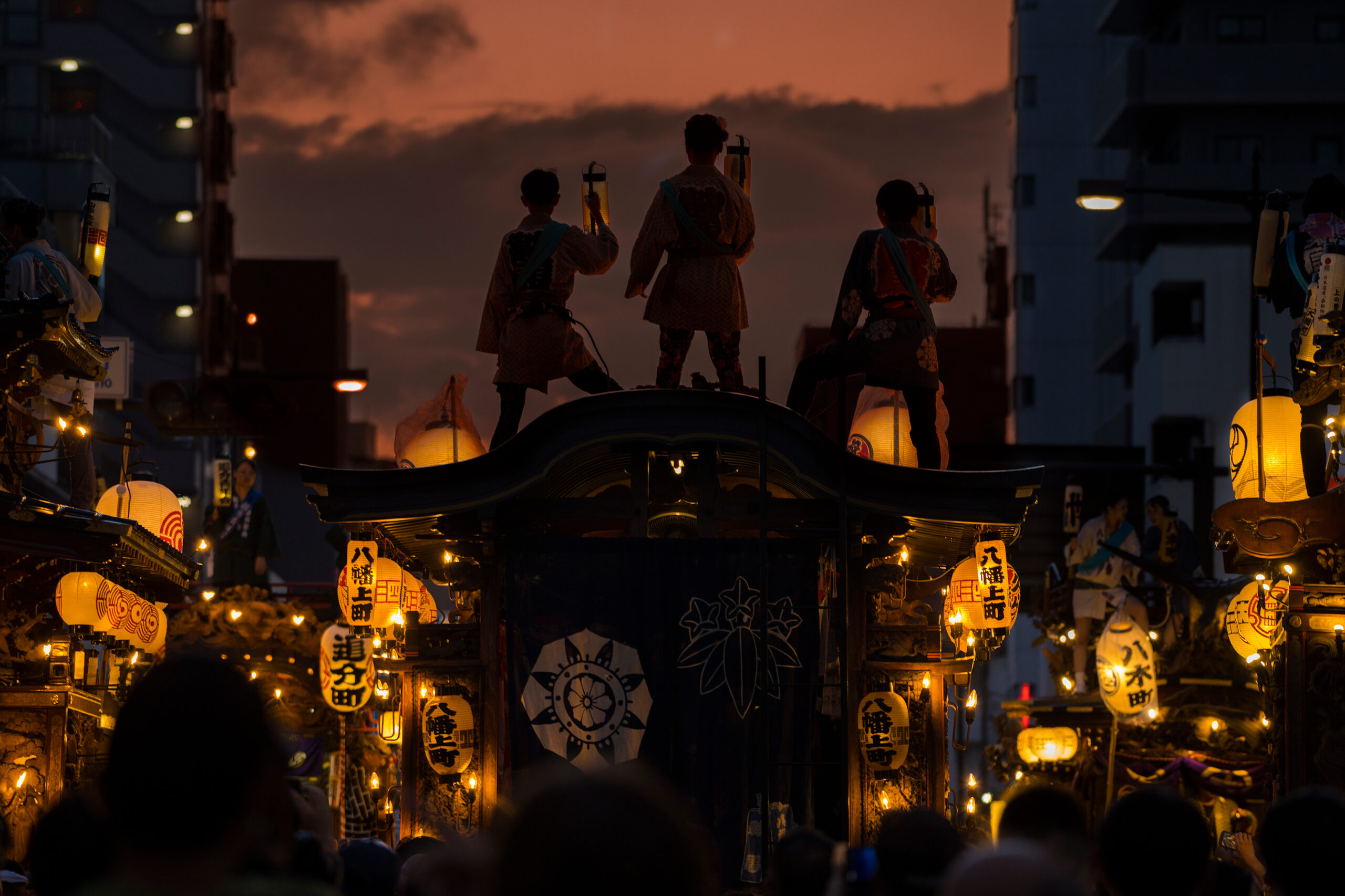
Many people might be thinking: “I’ve always wanted to visit Japan in the summer, but with so much information out there, I’m feeling a bit overwhelmed. When exactly is the best time to go to avoid the really intense heat and maybe catch some amazing festivals? And with so many festivals happening, how do I know which ones are really worth planning my trip around?”
The truth is, finding the perfect time to visit Japan in the summer involves balancing pleasant weather with the chance to experience truly spectacular festivals.
In this article, we will break down the Japanese summer season, highlighting the best periods to travel and pinpointing the summer festivals that you absolutely shouldn’t miss for an unforgettable cultural experience.
When is the Best Time to Visit Japan in Summer?
To truly enjoy your summer trip to Japan and make the most of the weather and festival season, understanding the nuances of the Japanese summer climate is crucial. The summer months in Japan generally span from June to September, each with its own distinct characteristics. Knowing what to expect will help you plan your itinerary and pack accordingly for a comfortable and memorable experience.
Understanding Japan’s Summer Climate
Japan experiences a humid subtropical climate in many of its main islands, which translates to hot and humid summers. The season typically begins with the rainy season (梅雨, tsuyu), which usually lasts from early June to mid-July. During this period, you can expect persistent rainfall and high humidity levels across much of the country, although the exact timing and intensity can vary from year to year and region to region. For example, Okinawa often experiences the rainy season earlier than Honshu.
Following the rainy season, Japan enters its period of peak summer heat and humidity, generally from mid-July to August. Temperatures can often soar above 30℃ (86℉), and the humidity can make it feel even hotter. This is when many of the famous summer festivals take place.
As August transitions into September, the intense heat gradually begins to subside, and the chance of typhoons increases, particularly in the southern regions. While early September can still be warm, the humidity often decreases, making it a more pleasant time to travel for some.
You Might Also Be Interested In:

Best Time to Visit Japan Summer: Month by Month Breakdown
To help you pinpoint the ideal time for your summer adventure, let’s break down what each month typically offers in terms of weather and events.
June: Avoiding the Crowds
June falls within the rainy season (梅雨, tsuyu) for many parts of Japan. While you can expect frequent rain, it’s not constant downpour, and you might still experience sunny days. The humidity will be noticeable. One advantage of visiting in June is that it’s generally less crowded than July and August, especially before the school holidays begin. If you don’t mind the rain, you can often find better deals on accommodation and enjoy popular sights with fewer tourists. Some early summer festivals might also start appearing towards the end of June.
July: Festival Season Begins
By mid-July, the rainy season typically ends across much of Japan, and the hot and humid peak summer (真夏, manatsu) arrives. This is when the vibrant summer festival (夏祭り, natsu matsuri) season truly kicks off. You’ll find numerous local and large-scale festivals taking place throughout the country, including iconic events like the Gion Matsuri (祇園祭, Gion Matsuri) in Kyoto. Be prepared for high temperatures and humidity, but also for the incredible energy and cultural experiences these festivals offer.
August: Peak Festival Season and Obon
August is typically the hottest month in Japan, with high temperatures and humidity persisting. However, it’s also the height of the summer festival season, with major events like the Aomori Nebuta Festival (青森ねぶた祭, Aomori Nebuta Matsuri) and numerous fireworks festivals (花火大会, hanabi taikai) taking place. Additionally, August is when the Obon (お盆) festival occurs, a significant Buddhist tradition where families honor their ancestors. This period often involves travel and can be quite busy, especially around mid-August.
September: Lingering Warmth and Fewer Tourists
As September arrives, the intense heat begins to ease, and while it can still be warm, the humidity often decreases, making it more comfortable for sightseeing. The peak summer crowds have usually dissipated, and you might find a more relaxed atmosphere. However, September is also the start of typhoon season (台風シーズン, taifū shīzun), so it’s essential to monitor weather forecasts. Some early autumn festivals might also start appearing towards the end of the month.
Considering Your Priorities: Weather vs. Festivals
Ultimately, the best time to visit Japan in summer depends on your personal priorities. If you are particularly sensitive to heat and humidity, you might find early June or late August/early September more comfortable, despite the possibility of rain in June or typhoons in September.
However, if experiencing the vibrant atmosphere of Japanese summer festivals is high on your list, then mid-July to August is the prime time to visit. During this period, you’ll have the most opportunities to witness spectacular events like the Gion Matsuri (祇園祭, Gion Matsuri) or the Aomori Nebuta Festival (青森ねぶた祭, Aomori Nebuta Matsuri). Keep in mind that this is also the peak tourist season, so expect larger crowds and potentially higher prices for flights and accommodation.
By weighing your tolerance for heat and humidity against your desire to attend specific festivals, you can make an informed decision about the ideal timing for your summer trip to Japan.
Must-See Summer Festivals Across Japan
Japan’s summer months are synonymous with vibrant and energetic festivals (夏祭り, natsu matsuri). These festivals are deeply rooted in Japanese culture and tradition, often with religious origins, and offer a fantastic opportunity to witness local customs, enjoy traditional music and dances, and savor delicious street food. From elaborate parades to breathtaking fireworks displays, here are some of the must-see summer festivals across Japan that you absolutely can’t miss.
Major Japan Summer Festivals You Can’t Miss
Japan boasts several iconic summer festivals that attract both domestic and international visitors. These large-scale events are renowned for their spectacular displays and unique cultural experiences.
Gion Matsuri, Kyoto Summer Travel
The Gion Matsuri (祇園祭, Gion Matsuri) in Kyoto, held throughout July, is one of Japan’s most famous and largest festivals. Its origins date back over a thousand years, and it is dedicated to the Yasaka Shrine. The festival’s highlight is the 山鉾巡行 (Yamaboko Junkō), a grand procession of elaborately decorated floats (山鉾, yamaboko) that takes place on July 17th (and also on July 24th for a smaller procession). These massive floats are like mobile museums, adorned with intricate tapestries and carvings. The entire month of July in Kyoto is filled with various events leading up to the main processions, including smaller shrine visits and evening street parties.
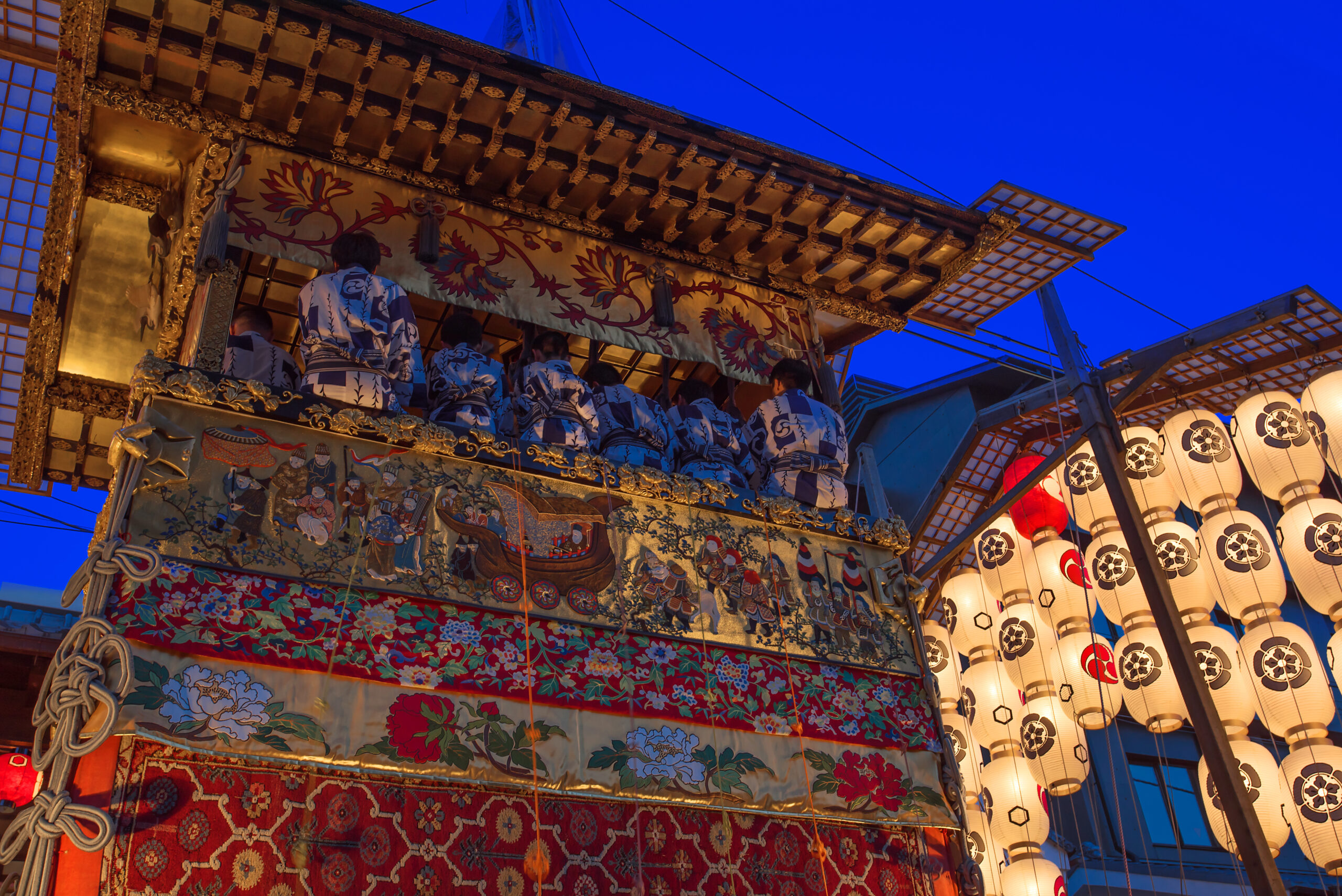
Aomori Nebuta Festival
The Aomori Nebuta Festival (青森ねぶた祭, Aomori Nebuta Matsuri), held annually from August 2nd to 7th in Aomori Prefecture, is a visually stunning spectacle featuring enormous, illuminated paper lanterns (ねぶた, nebuta) depicting mythical figures, historical characters, and kabuki actors. These vibrant lanterns, some of which can be as wide as nine meters, are paraded through the streets, accompanied by energetic taiko drummers (太鼓, taiko), hand cymbal players (手振り鉦, teburigane), and dancers (跳人, haneto). The lively atmosphere and the sheer scale of the illuminated floats make this festival an unforgettable experience.
For Further Reading:
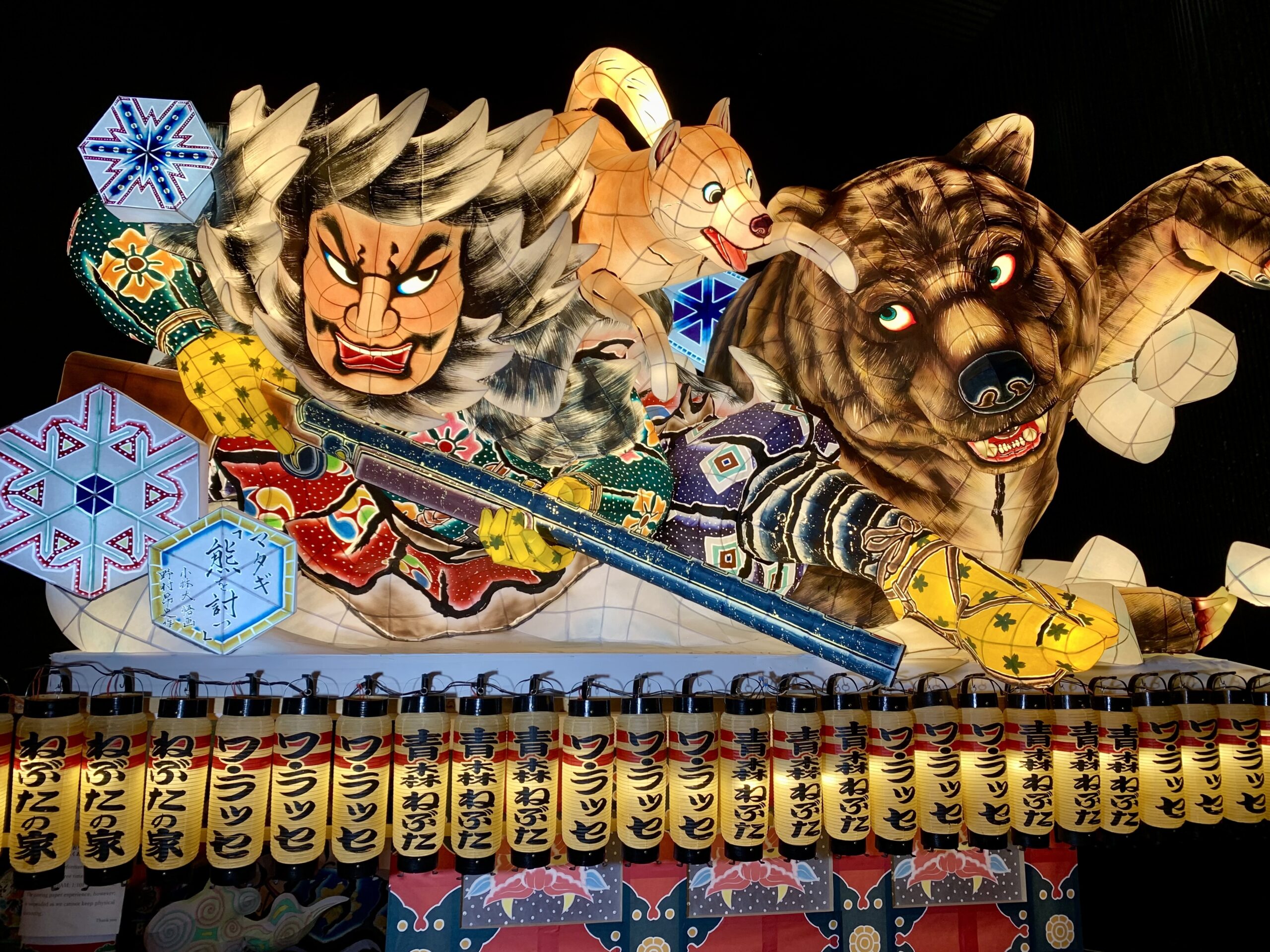
Sumida River Fireworks Festival, Tokyo Summer Travel
The Sumida River Fireworks Festival (隅田川花火大会, Sumidagawa Hanabi Taikai) in Tokyo, usually held on the last Saturday of July, is one of Japan’s oldest and most spectacular fireworks displays. Thousands of fireworks light up the night sky over the Sumida River, creating breathtaking scenes. The festival attracts a massive crowd, so it’s essential to plan your viewing spot in advance. Many people arrive early to secure a good location along the riverbanks or even book seats in designated viewing areas. The combination of the vibrant atmosphere and the stunning artistry of the fireworks makes this a quintessential Tokyo summer event.
Tenjin Matsuri, Osaka
The Tenjin Matsuri (天神祭, Tenjin Matsuri) in Osaka, held on July 24th and 25th, is one of Japan’s three great festivals. It is dedicated to Sugawara no Michizane, the deity of learning and arts, enshrined at Osaka Tenmangu Shrine. The festival’s highlight on July 25th is a spectacular procession on land and water, featuring elaborately decorated boats (船渡御, funatogyo) sailing down the Okawa River, along with costumed participants and portable shrines (神輿, mikoshi). The evening culminates in a dazzling fireworks display that illuminates the river and the surrounding city.
Exploring Regional Japanese Summer Festivals
While the major festivals draw large crowds, Japan’s summer is also a time when countless regional and local festivals take place across the country. These smaller events offer a more intimate glimpse into local traditions and community life. Seeking out these regional festivals can provide a unique and memorable experience away from the major tourist routes.
Tanabata Festivals (Star Festivals)
Tanabata (七夕), or the Star Festival, is celebrated on July 7th (though some regions celebrate in August). It is based on a Chinese legend about two lovers, Orihime and Hikoboshi (represented by stars), who are separated by the Milky Way and allowed to meet only once a year. People write wishes on colorful strips of paper (短冊, tanzaku) and hang them on bamboo branches. While celebrated nationwide, some cities like Sendai hold large-scale Tanabata festivals with elaborate bamboo decorations.
The Sendai Tanabata Festival, which originated during the era of Date Masamune, the first lord of the Sendai Domain, is a traditional event that has been passed down through generations . Today, it is the largest Tanabata celebration in Japan, attracting over two million visitors annually .
Bon Odori (Buddhist Folk Dances)
Bon Odori (盆踊り) are Buddhist folk dances performed during the Obon (お盆) season, usually in August, to welcome the spirits of ancestors. These dances vary greatly from region to region, each having its own unique music and choreography. People gather in public spaces, often around a central platform (櫓, yagura), and dance in a circle. Participating in a local Bon Odori is a wonderful way to experience a traditional Japanese summer custom and interact with the local community.
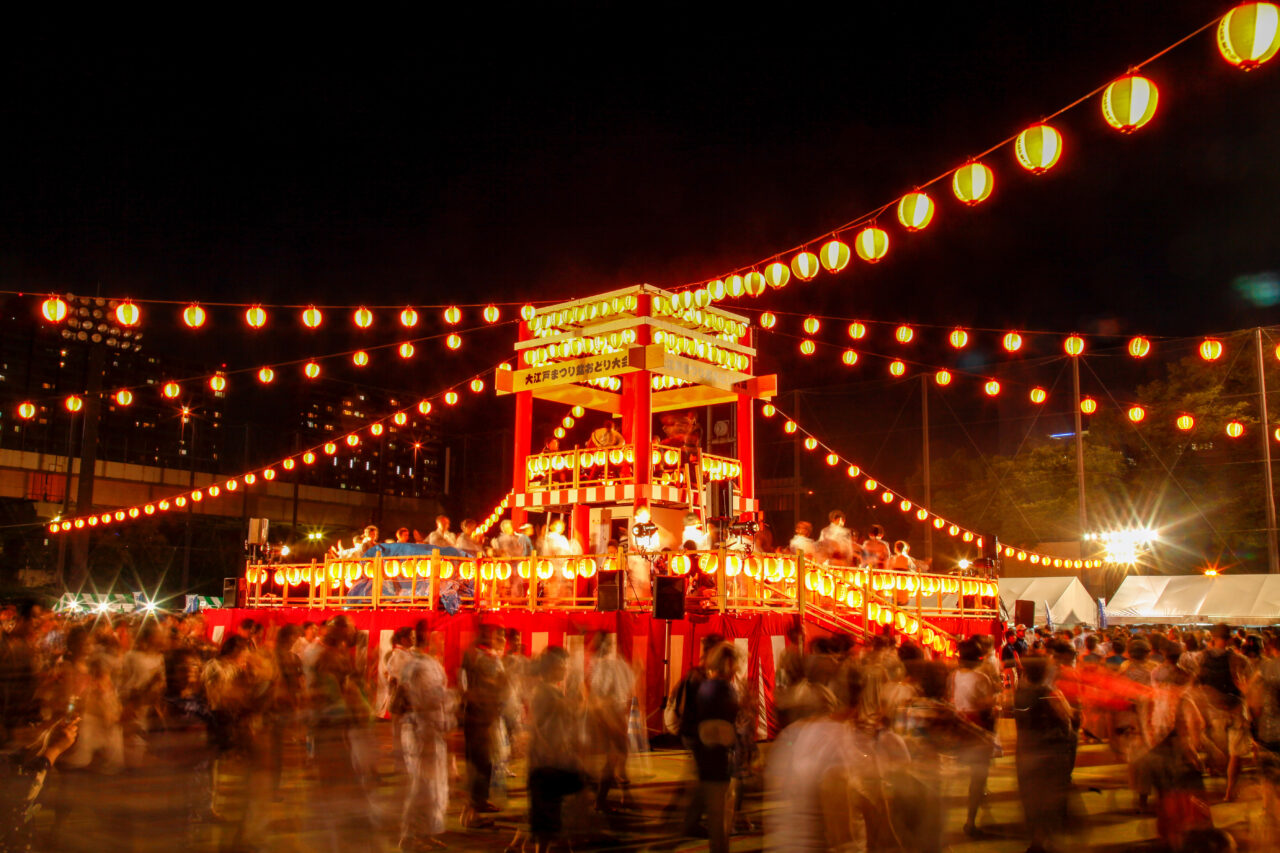
Local Community Festivals: Discover Hidden Gems
Beyond the well-known events, almost every town and neighborhood in Japan has its own small-scale summer festival. These local community festivals are often centered around the local shrine (神社, jinja) or temple (寺, tera) and feature portable shrines (神輿, mikoshi), local food stalls (屋台, yatai), and traditional performances. Discovering these hidden gems requires a bit more local knowledge or research, but they offer an authentic and less crowded festival experience.
Tips for Enjoying Summer Festivals
Attending a Japanese summer festival (夏祭り, natsu matsuri) is a fantastic experience, but a little preparation can help you enjoy it to the fullest, especially given the summer heat and crowds.
What to Wear: Embracing the Yukata
Wearing a yukata (浴衣), a casual cotton kimono, is a popular way to get into the festival spirit. It’s lightweight and comfortable for summer evenings.
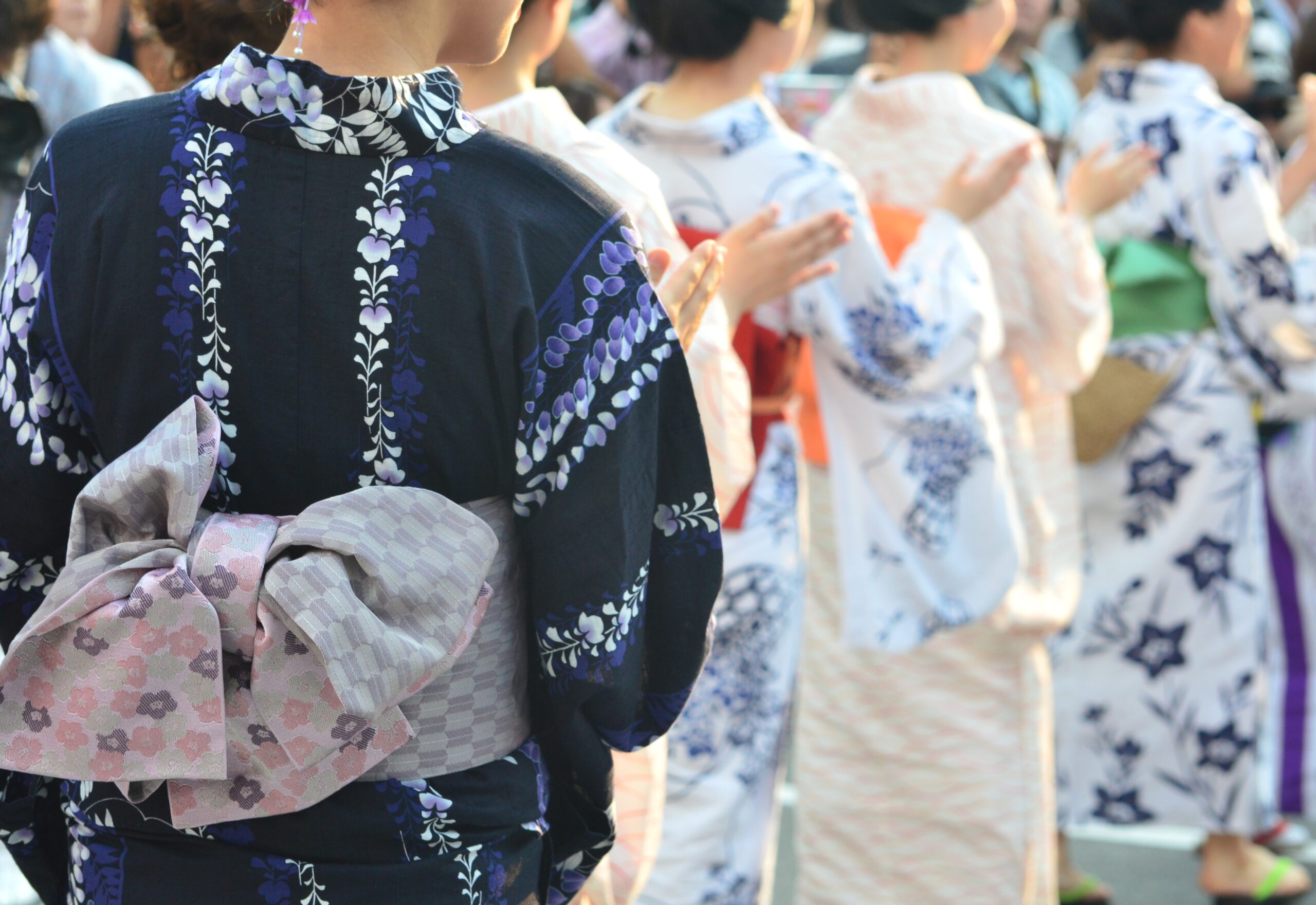
Etiquette and Practical Advice for Festival Goers
Expect crowds, especially at major festivals, so be prepared for packed trains and festival grounds. Stay hydrated by carrying water or purchasing drinks from stalls. Be mindful of local customs and etiquette; for instance, some festivals have specific rules about participating in dances or touching floats. Trying the various foods from the yatai (屋台, yatai), or food stalls, is a must-do part of the experience!
Top Summer Travel Destinations Beyond Festivals
While Japanese summer festivals (夏祭り, natsu matsuri) are undoubtedly a major draw, Japan offers a wealth of other incredible destinations that are perfect for summer travel. Whether you’re looking to escape the heat in cooler climates, relax by the coast, or explore natural beauty, there are numerous options to consider.
Escaping the Heat: Mountain and Highland Retreats
One of the best ways to find respite from the intense summer heat and humidity is to head to Japan’s mountainous regions or highland resorts. The higher altitudes offer cooler temperatures and often stunning natural scenery perfect for outdoor activities.
The Japanese Alps: Hiking and Scenic Beauty
The Japanese Alps (日本アルプス, Nihon Arupusu), a series of mountain ranges spanning across Honshu, offer a refreshing escape in summer. This region is a paradise for hikers and nature lovers, with numerous trails ranging from easy walks to challenging climbs. Popular areas include Kamikochi, a pristine mountain valley renowned for its natural beauty, and the Tateyama Kurobe Alpine Route, which offers dramatic panoramic views. The cooler mountain air provides a welcome contrast to the heat of the cities, and the lush green landscapes are at their most vibrant.
Hakone: Art, Nature, and Volcanic Hot Springs
Located within easy reach of Tokyo, Hakone (箱根) is a popular mountain resort area known for its natural beauty, art museums, and hot springs (温泉, onsen). In summer, the temperatures are generally milder than in central Tokyo, making it a pleasant place to explore.
You can take a scenic cruise on Lake Ashi with views of Mount Fuji (weather permitting), ride the Hakone Ropeway over volcanic hot springs, and visit world-class art museums like the Hakone Open-Air Museum. Hakone offers a blend of nature, culture, and relaxation.
Here are some official websites for more information:
Karuizawa: A Refreshing Highland Escape
Karuizawa (軽井沢) in Nagano Prefecture is another popular highland resort town, particularly favored as a summer retreat. Known for its pleasant climate, lush forests, and stylish atmosphere, it attracts visitors looking for a cooler escape from the city heat. You can enjoy cycling along tree-lined paths, visiting art galleries and museums, exploring charming streets with boutiques and cafes, and enjoying outlet shopping. Karuizawa offers a relaxed and sophisticated summer experience.
Here are some official websites for more information:
We also recommend this article!
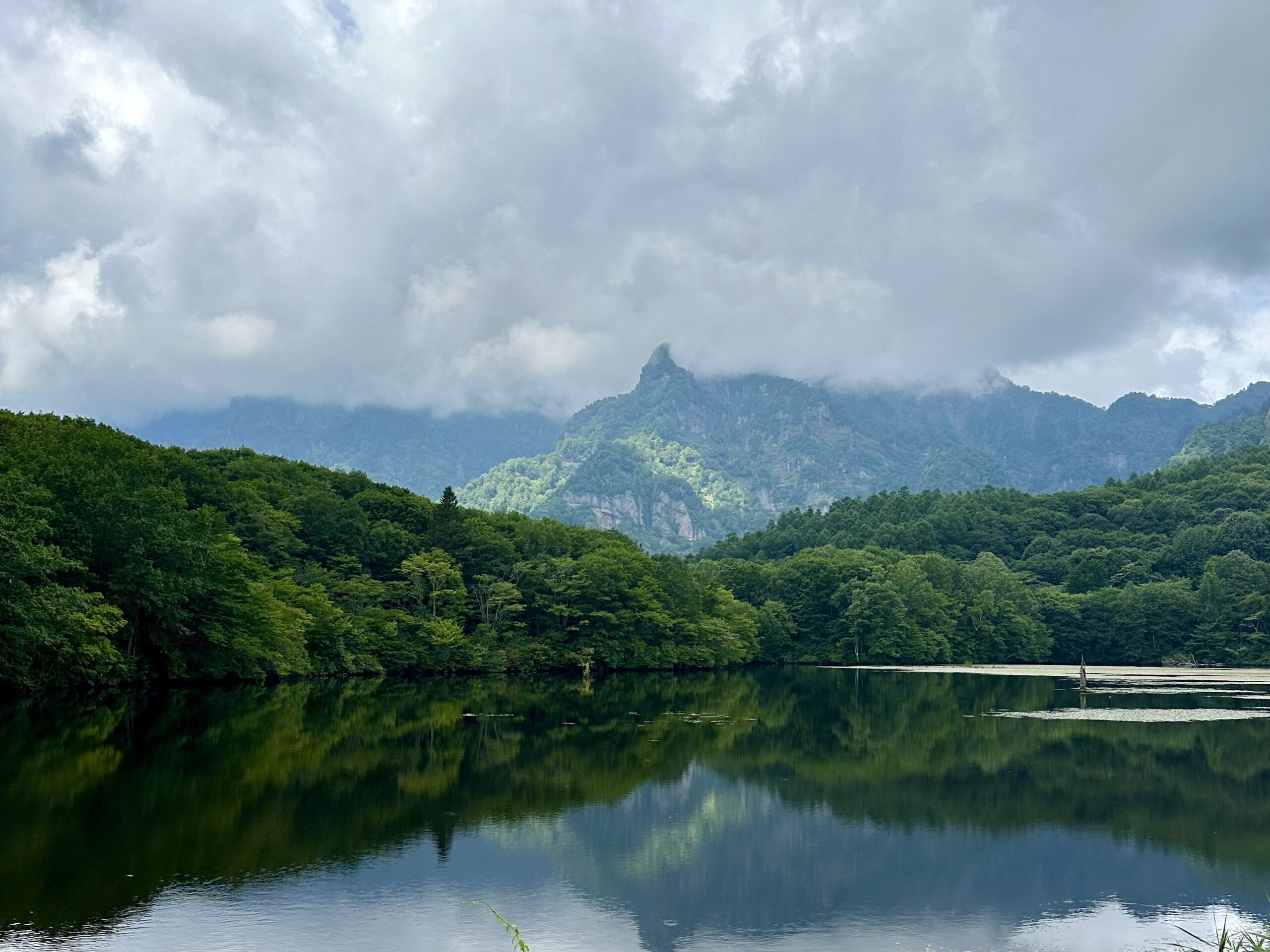
Coastal Getaways: Beaches and Island Escapes
For those who prefer the coast, Japan has numerous beaches and islands that come alive in the summer. While some can get crowded, they offer opportunities for swimming, sunbathing, and enjoying marine activities.
Okinawa: Tropical Beaches and Island Culture
Located in the southernmost part of Japan, Okinawa (沖縄) offers a tropical paradise with stunning white-sand beaches, crystal-clear waters, and a unique cultural heritage. While Okinawa’s summer is long and can be very hot and humid, it’s the perfect time for swimming, snorkeling, and diving among vibrant coral reefs. Exploring the main island or visiting smaller islands like Ishigaki (石垣島, Ishigaki-jima) or Miyako (宮古島, Miyako-jima) provides a distinct Japanese experience with a relaxed, subtropical vibe.
Here are some official websites for more information:
- Visit Okinawa Japan (Okinawa Official Tourism Guide)
- Ishigaki Island Travel information
- Miyako Islands Tourism Association
- JNTO page on Okinawa
Izu Peninsula: Stunning Coastlines and Onsen
The Izu Peninsula (伊豆半島, Izu Hantō), easily accessible from Tokyo, is known for its dramatic coastlines, beautiful beaches, and abundant hot springs (温泉, onsen). Summer is a popular time for swimming and enjoying the various seaside towns. You can explore scenic coastal drives, relax on sandy beaches, surf at designated spots, and unwind in the region’s many onsen resorts. The Izu Peninsula offers a convenient coastal escape with plenty of natural beauty.
Here are some official websites for more information:
- Izu Peninsula Geopark (focuses on geological features, but includes tourism info)
- Shizuoka Guide (Official Tourism Guide for Shizuoka Prefecture, includes Izu)
- Atami City Tourism Official Website (Atami is a key city in Izu)
- Ito City Tourism Information (Ito is another key city in Izu)
The Seto Inland Sea Islands: Art and Tranquility
The islands scattered across the Seto Inland Sea (瀬戸内海, Seto Naikai) offer a different kind of coastal experience. Known for their art installations, laid-back atmosphere, and beautiful sea views, islands like Naoshima (直島) and Teshima (豊島) are increasingly popular. While perhaps not traditional beach resorts (though some do have beaches), they provide a tranquil summer escape focused on art, nature, and island hopping. The ferry journeys between the islands offer refreshing sea breezes.
Here are some official websites for more information:
- Setouchi Finder (Comprehensive guide to the Setouchi region)
- Benesse Art Site Naoshima (Official site for art museums on Naoshima and Teshima)
- Setouchi Triennale (Information about the art festival on the islands – held every three years)
- Shikoku Kisen (Ferry information for Naoshima, Teshima, etc.)
Experiencing Nature and Culture in Summer
Beyond mountains and coasts, other regions and types of experiences offer unique ways to enjoy summer in Japan.
Hokkaido in Summer: Flowers, Wildlife, and Cooler Climate
Hokkaido (北海道), Japan’s northernmost main island, offers a significantly cooler climate than the rest of the country during summer, making it a very popular destination. Summer in Hokkaido is famous for its vibrant flower fields, particularly the lavender fields in Furano (富良野). It’s also a great time for outdoor activities like hiking, cycling, and observing wildlife. If you want to avoid the intense heat of Honshu while still enjoying beautiful landscapes, Hokkaido is an excellent choice.
Here are some official websites for more information:
- HOKKAIDO LOVE! (Hokkaido Official Tourism Website)
- Furano Tourism Association Official Website
- Hokkaido National Parks (Ministry of the Environment Government of Japan, provides info on National Parks of Japan)
Exploring Traditional Villages: Stepping Back in Time
Visiting well-preserved traditional villages like Shirakawa-go (白川郷) in Gifu Prefecture can also be a unique summer experience. While they can attract visitors, the rural setting and traditional Gassho-zukuri (合掌造り) farmhouses offer a glimpse into old Japan. Exploring these areas in summer allows you to see the surrounding nature in its lush green state. It’s a chance to slow down and appreciate a different pace of life away from the bustling cities and major festival sites.
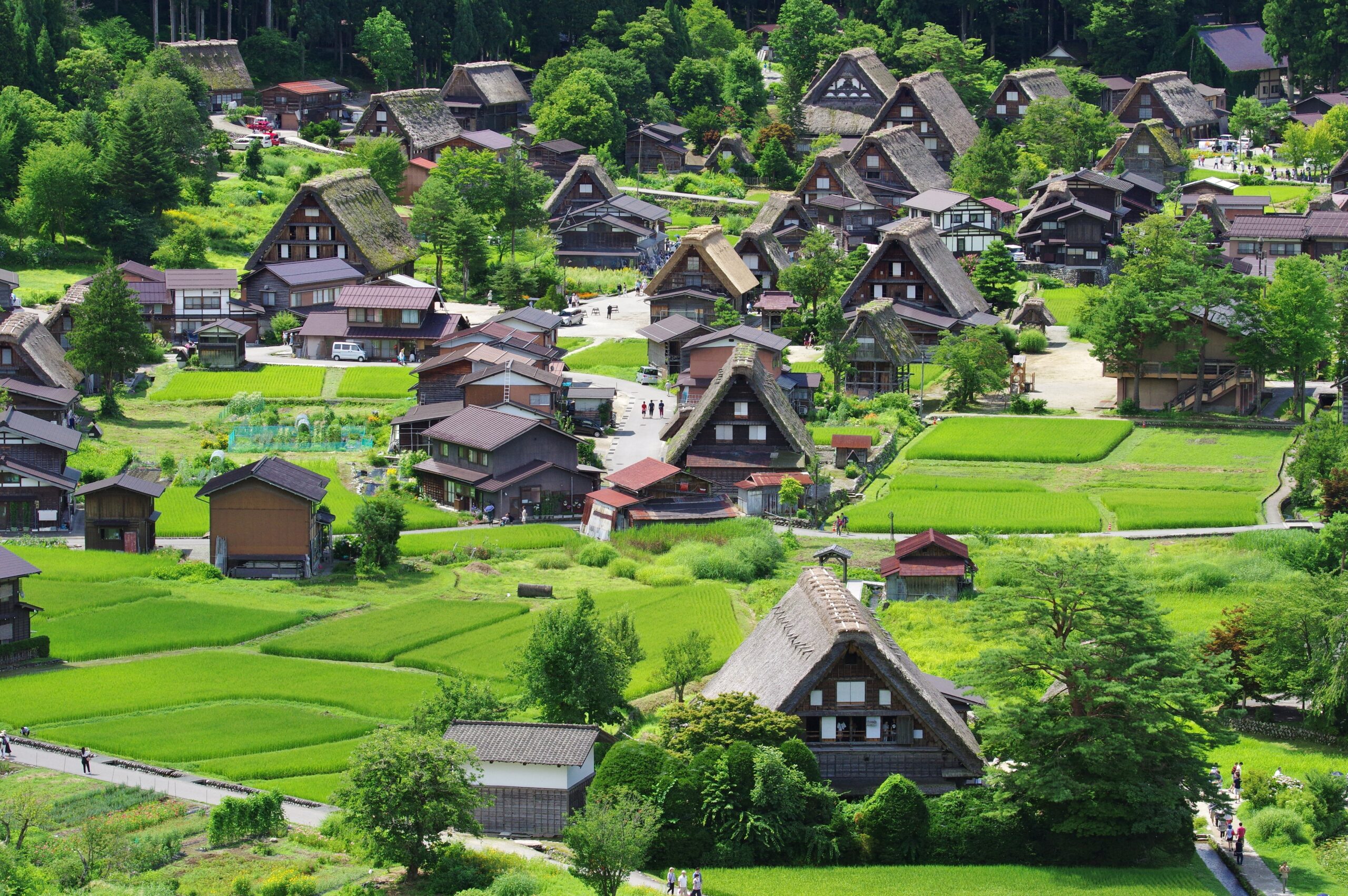
Here are some official websites for more information:
Practical Tips for Summer Travel in Japan
Traveling through Japan in the summer months offers a truly unique experience, filled with vibrant culture and stunning scenery. While the heat and humidity present a challenge, being well-prepared with essential practical tips will significantly enhance your comfort and allow you to fully enjoy your summer adventure in Japan.
Dealing with the Heat and Humidity: Staying Cool and Comfortable
Japan’s summer is notably hot and humid, making it crucial to take steps to manage the heat. Staying cool isn’t just about comfort; it’s vital for your health and safety.
Staying Hydrated
Frequent hydration is paramount in Japan’s summer heat. Always carry water and drink regularly, even before you feel thirsty. Vending machines and convenience stores are readily available for purchasing cold drinks.
Appropriate Clothing
Choose lightweight, breathable fabrics like cotton or linen. Light-colored and loose-fitting clothing helps air circulate and keeps you cooler. Moisture-wicking materials are also beneficial, especially if you’re active.
Sun Protection
Protect yourself from the strong sun. Use sunscreen regularly, wear a hat, and use sunglasses. Carrying a parasol (日傘, higasa) is also a common and effective way to find personal shade.
Preventing Heatstroke
Be aware of the risks of heatstroke (熱中症, necchūshō). Take breaks in air-conditioned spaces, listen to your body for warning signs like dizziness, and use cooling products like towels or wipes.
Transportation During Summer
Navigating Japan during the summer, especially during peak times like the Obon (お盆) period in August, requires some consideration for transportation. Planning ahead can help you travel more smoothly and comfortably despite the heat and potential crowds.
Booking in Advance
For long-distance travel, particularly on the Shinkansen (新幹線) bullet trains, it is highly recommended to book your tickets in advance, especially during summer weekends or the busy Obon week, as seats can sell out quickly.
Utilizing Public Transport
Japan’s public transport system is incredibly efficient. While trains can be crowded, especially during rush hours or near festival sites, they are often air-conditioned. Using an IC card like Suica or Pasmo makes local travel simple.
Here are official websites on these IC cards:
Staying Cool on the Go
When using public transport, try to find air-conditioned cars. Carry a hand fan (扇子, sensu or うちわ, uchiwa) or a small portable fan, and have a cold drink ready.

Accommodation Tips for Summer
Securing suitable accommodation is essential for a comfortable summer trip to Japan. With peak travel season and numerous festivals, planning where you’ll stay requires attention, especially regarding comfort in the heat.
Booking Early
Due to high demand, particularly in July and August and around major festivals, it is crucial to book your accommodation well in advance. Popular hotels and traditional inns (旅館, ryokan) fill up quickly.
Considering Air Conditioning
Given the high temperatures and humidity, air conditioning (エアコン, eakon) is not just a luxury but a necessity. Always confirm that your accommodation has reliable air conditioning before booking to ensure a comfortable stay.
Ryokan vs. Hotels
Decide between a traditional ryokan (旅館) for a cultural experience or a modern hotel. Both offer air conditioning, but ryokan provide a unique stay with Japanese-style rooms and sometimes, onsen (温泉) baths. In summer’s peak season, both types of accommodation are in high demand, making early booking especially important regardless of your choice.
Staying Healthy During Your Trip
Taking simple precautions can help you stay healthy and well during your summer trip, allowing you to fully enjoy your experiences without interruption.
Staying Fresh in the Heat
To feel more comfortable in the heat and humidity, staying fresh is recommended. You might find it helpful to use hand sanitizer and carry cooling wipes (冷却シート, reikyaku shīto) for quick cleaning and refreshing. These are readily available at convenience stores and drugstores (ドラッグストア) across Japan.
Insect Repellent
Summer means more insects, particularly mosquitoes (蚊, ka). Carry and use insect repellent (虫除け, mushiyoke), especially in the evenings or when visiting parks and natural areas. You can easily purchase it at convenience stores and drugstores (ドラッグストア) across Japan..
Conclusion
Embarking on Japan summer travel offers an experience unlike any other. Despite the heat and humidity, the season is alive with a unique energy, largely defined by its spectacular events. Deciding the best time to visit Japan summer often comes down to balancing your comfort level with the climate and your desire to witness specific Japanese summer festivals. From the historic processions of Kyoto’s Gion Matsuri (祇園祭) to the dazzling displays of fireworks festivals (花火大会, hanabi taikai), these cultural events provide unforgettable insights into local traditions.
Beyond the festive excitement, summer is also an ideal time to explore cooler highland retreats, vibrant coastal areas, and unique natural landscapes in places like Hokkaido. By utilizing practical tips for managing the heat, navigating transport, and securing accommodation, you can ensure a comfortable journey. While planning is key, the rewards of experiencing Japan in the middle of summer are immense. Equipped with this guide, you now have the essential tools to plan your own incredible summer adventure in Japan.
FAQs about Japan Summer Travel
What is the typical weather like in Japan during the summer months?
Japan’s summer is characterized by high temperatures and significant humidity. June often starts with the rainy season (梅雨, tsuyu), followed by intense heat in July and August. Temperatures frequently exceed 30°C (86°F). September sees temperatures gradually decrease, but humidity can linger, and typhoons (台風, taifū) are possible.
What are some must-try summer foods and drinks in Japan?
Japanese summer offers refreshing culinary delights. Don’t miss Kakigori (かき氷, kakigōri), shaved ice with syrup. Nagashi Somen (流しそうめん), cold noodles caught from a flowing stream, is a fun experience. Enjoy cold drinks like Ramune (ラムネ) or try refreshing mugicha (麦茶), barley tea, widely available.
Is it very crowded in Japan during the summer travel season?
Yes, summer is generally a peak travel season in Japan, especially in July and August. Popular destinations and major summer festivals will be very crowded. The Obon (お盆) holiday in August is a particularly busy domestic travel period. Booking in advance is highly recommended.
What are some essential items to pack for a summer trip to Japan?
Pack lightweight, breathable clothing. Essential items include sunscreen (日焼け止め, hiyake dome), a hat, sunglasses, insect repellent (虫除け, mushiyoke), and a portable fan or hand fan (扇子/うちわ, sensu/uchiwa). Reusable water bottles and cooling wipes are also very helpful for staying comfortable in the heat and humidity.
How can I stay cool and avoid heatstroke while exploring Japan in the summer?
Stay hydrated by drinking water frequently. Seek out air-conditioned spaces like convenience stores or department stores for breaks. Use sun protection, wear appropriate clothing, and take it easy during the hottest parts of the day. Pay attention to your body to prevent heatstroke (熱中症, necchūshō).
